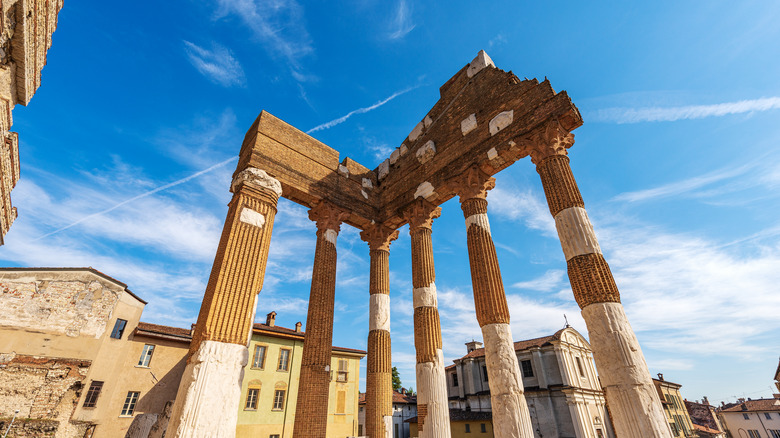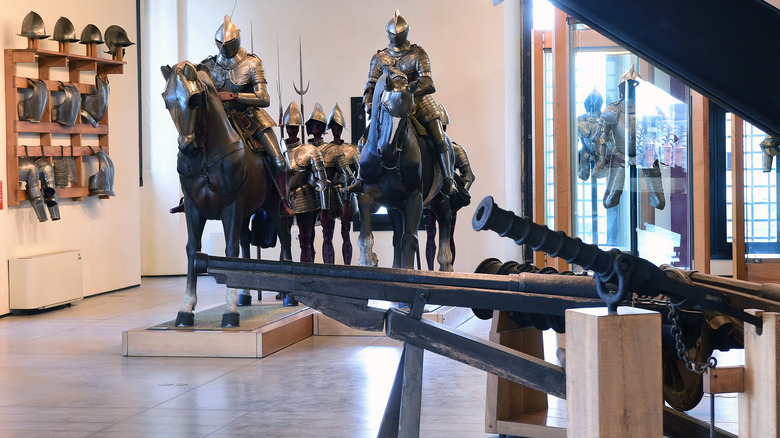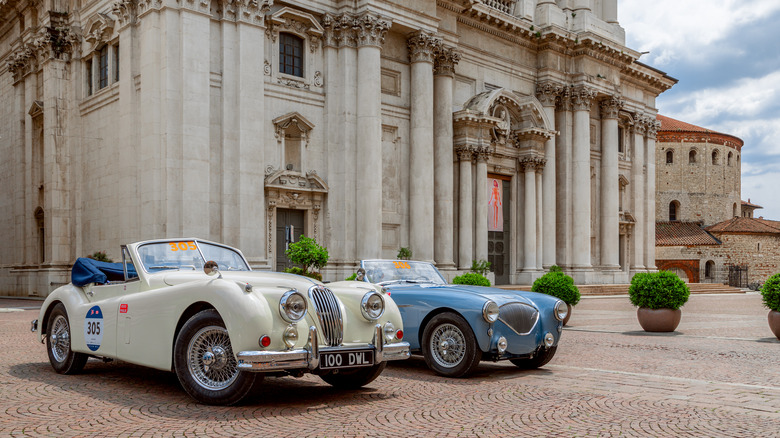History Buffs Will Love This Lesser Known City In Northern Italy
Brescia, located in the Lombardy region of Italy, is an enchanting city often overlooked by tourists in favor of its more famous neighbors like Milan and Venice. However, this hidden gem offers a rich blend of history, culture, and gastronomy, making it an ideal destination for an authentic "la dolce vita" experience. Nicknamed "The Italian Lioness" but known in antiquity as Brixia (meaning "a high place"), Brescia has been a pivotal regional center since pre-Roman times. Founded more than 3,200 years ago, this Italian city is a great destination for history buffs, with no shortage of curiosities to explore.
Its old town boasts some of the best-preserved Roman public buildings in all of northern Italy. Among its numerous monuments are the Old and New cathedrals, the Renaissance Piazza della Loggia with its grand clocktower, and the rationalist style Piazza della Vittoria. Everything is conveniently within walking distance in Brescia's historic center — as you hop from one monument to another, you can also stop by the many shops, restaurants, and cafes lining the cobblestone streets.
Brescia's history is deeply entwined with the Roman Empire, and this legacy is evident in its many stunning archaeological sites. The Roman Forum, with its well-preserved ruins, provides a glimpse into ancient life. The Capitolium, a temple dating back to the first century AD, is another must-visit. These have all been recognized as UNESCO World Heritage Sites, showcasing the city's significant historical and archaeological value.
Art, castles, and nature in Brescia
Art lovers will be drawn to the Pinacoteca Tosio Martinengo, a gallery housing an impressive collection of paintings from the 14th to the 19th centuries, including works by Raphael, Lotto, and Moretto da Brescia. The Santa Giulia Museum, another UNESCO site, is located in a former monastery and houses artifacts from prehistoric times to the present day. The museum complex spans 150,000 square feet and comprises multiple buildings from different periods, including the Basilica of San Salvatore and the Choir of the Nuns.
Dominating the city's skyline is the Castle of Brescia, a medieval fortress perched on Cidneo Hill, offering panoramic views of the city and the surrounding countryside. The castle is a fine example of medieval military architecture and features imposing walls, towers, and a drawbridge. Inside the castle complex, you'll find two museums — the Luigi Marzoli Arms Museum, one of the most important European collections of ancient arms and armor, and the Museum of the Risorgimento, dedicated to the Italian unification movement.
For nature lovers, the nearby Lake Garda (Italy's largest lake!) and the Italian Alps offer breathtaking landscapes and outdoor activities at just an hour's drive from Brescia. The lake is encircled by picturesque towns, including Sirmione, known for its thermal springs and medieval castle; Riva del Garda, with strong winds ideal for sailing and windsurfing; and Malcesine, famous for its castle and cable car up Monte Baldo. Whether swimming in the lake or hiking up the Alps, Brescia is the perfect base for exploring the beauty of Northern Italy.
Gastronomy and cultural events in Brescia
Italian cuisine needs no introduction, and Brescia is no exception. The region is famous for producing Franciacorta wine and being a significant source of Italian caviar. Local specialties include "casoncelli," a stuffed pasta, and "spiedo Bresciano," a slow-roasted meat dish cooked on a spit. Brescia was honored as the "European Region of Gastronomy" in 2017 and the "Italian Capital of Culture" alongside Bergamo in 2023 for its rich culinary and cultural traditions.
Brescia hosts the historic Mille Miglia, a vintage car race starting in Brescia and ending in Rome — a highlight for motor enthusiasts. The event usually takes place in June and retains much of its original 1927 to 1957 route. Today, the Mille Miglia is a renowned cultural event, attracting participants and spectators from around the world. In Brescia, the Mille Miglia Museum showcases vintage cars, one-of-a-kind memorabilia, and multimedia exhibits about the race's history.
Visiting Brescia is best during the spring and autumn for pleasant weather and an uncrowded feel. Summertime is peak tourist season and gets quite hot. Book your accommodations in advance, especially if you're visiting during any events. You can land at Brescia Airport or make Brescia an extended stop on a northern Italian trip. Much of Brescia can be explored by foot, but there are also reliable buses and metro. A Brescia Card grants unlimited public transport, discount perks, and access to main museums. "The Italian Lioness" beckons all — from history and art lovers to vintage car enthusiasts and every traveler in between!


